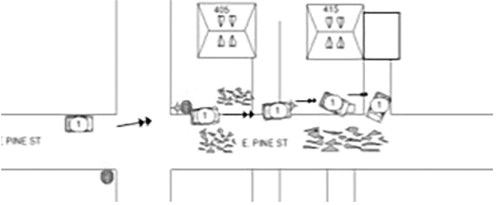Practice safe merging techniques to prevent crashes
Merging is a common technique on roads, that requires all drivers to stay calm and pay attention to avoid crashes. The Wisconsin State Patrol’s February Law of the Month, highlights the basics of safe merging, for new and experienced drivers.
Merging includes changing lanes, joining traffic on another road, or entering a roadway from the curb or shoulder. State law requires drivers to stay in their lane and wait to merge, until they are certain they have enough space to do so safely.
“Proper merging helps maintain a safe and smooth flow of traffic,” said State Patrol superintendent Tim Carnahan. “Drivers encounter many different situations on the road that require merging. Crashes can be avoided when motorists are cautious of others on the road, allow plenty of distance between vehicles and avoid driving in blind spots of other vehicles.”
Before moving into another lane, drivers need to do the following:
• Be sure the road is clear and there is a large enough gap between vehicles, to allow for safely changing lanes.
• Use turn signals to give other drivers time to react to the planned move. State law requires drivers to use turn signals before changing lanes, turning or merging into traffic.
• Scan quickly for traffic to the side and behind the vehicle. Use the rear view and side mirrors, and look over the shoulder to check blind spots. Do not take eyes off the road for more than an instant, because traffic ahead may stop suddenly.
• Look carefully for other road users, like motorcyclists, bicyclists and pedestrians, who are harder to see.
When merging onto another road, like an interstate or highway, drivers should yield to traffic already moving on the roadway. When using an entrance ramp, aim to enter the highway at the same speed that traffic is moving. High-speed roadways generally have an acceleration lane, to give drivers time to build up speed, before merging into traffic.
If waiting for space to enter a roadway, slow down on the ramp, so there’s some room to speed up before merging.
When traffic patterns change and lanes are closed, for construction or emergencies, drivers are asked to use the zipper merge technique, to reduce traffic congestion. When there’s sign indicating a lane closure ahead, continue to drive in the same lane up until the final merge point. When reaching this point, take alternating turns with other drivers to merge into the single lane of traffic.
It is important to note, a zipper merge is not necessary when traffic is moving at highway speeds and there are no backups. Drivers can move over sooner, if it is safe to do so.
The zipper merge is a safer way to reduce lanes. When a vehicle slows down to merge early in heavy traffic, it can slow traffic down too quickly, leading to unexpected crashes. The zipper merge allows everyone to move at the same rate, minimizing delays for all.
Roundabouts are a safe and efficient way to reduce traffic congestion, keep vehicles moving one way and eliminate conflict points at an intersection. There are approximately 600 roundabouts across Wisconsin.
When merging into a roundabout, slow down and yield to all lanes of traffic on the left, and traffic already in the roundabout. Stay in the lane when traveling through the roundabout. Use the right turn signal, when approaching the exit.
Commercial trucks can weigh up to 80,000 pounds, so they require a greater distance to stop. Whenever merging near a large truck, commercial motor vehicle or bus, allow plenty of distance, to not cut them off.


